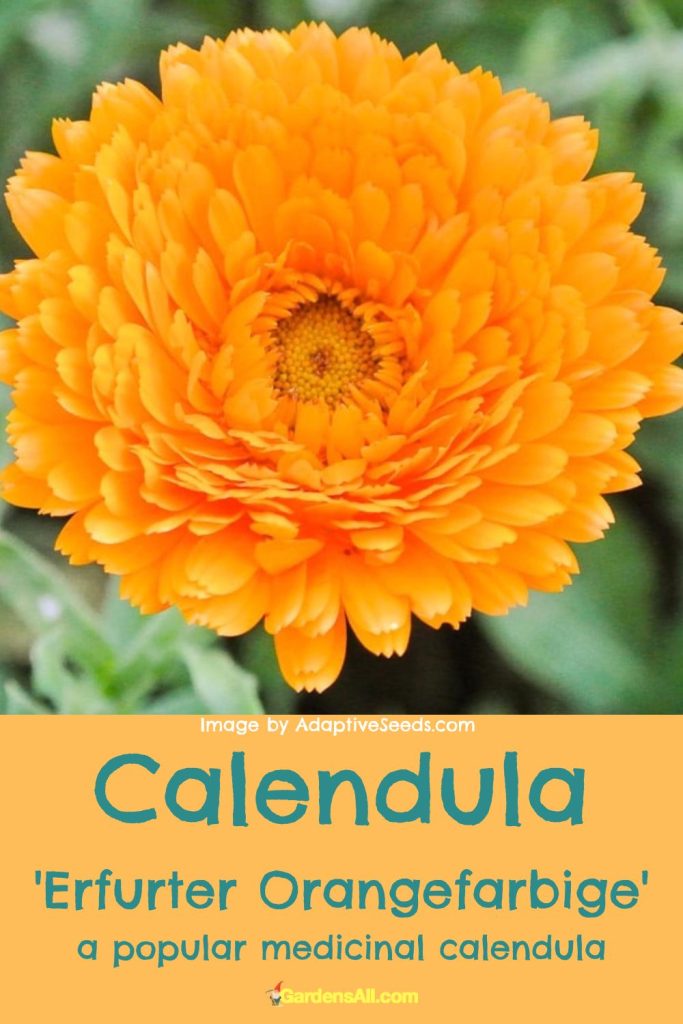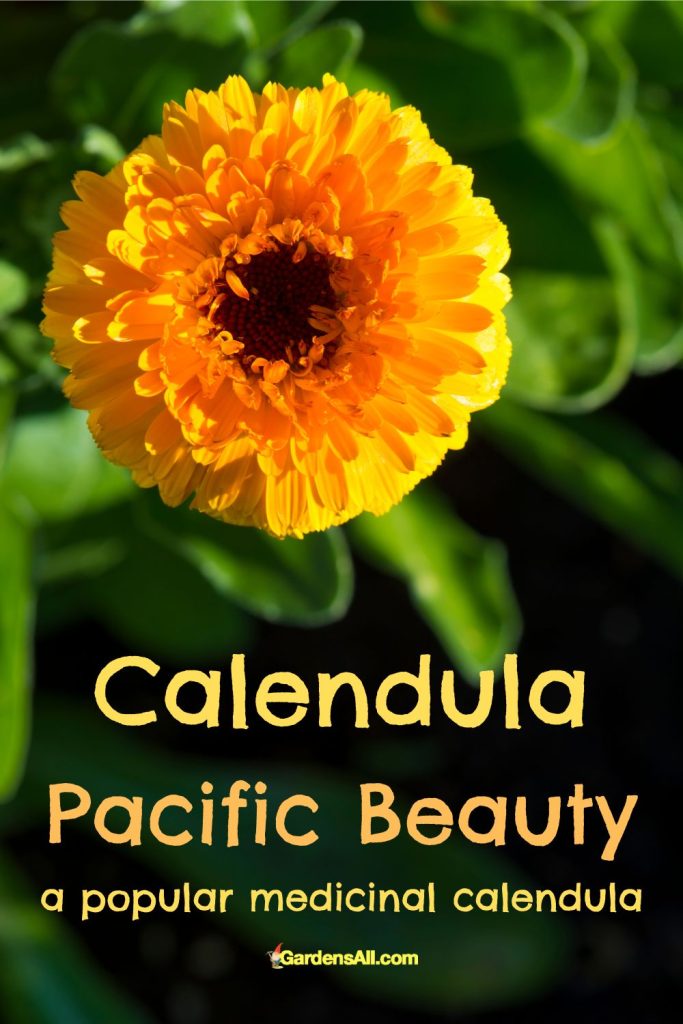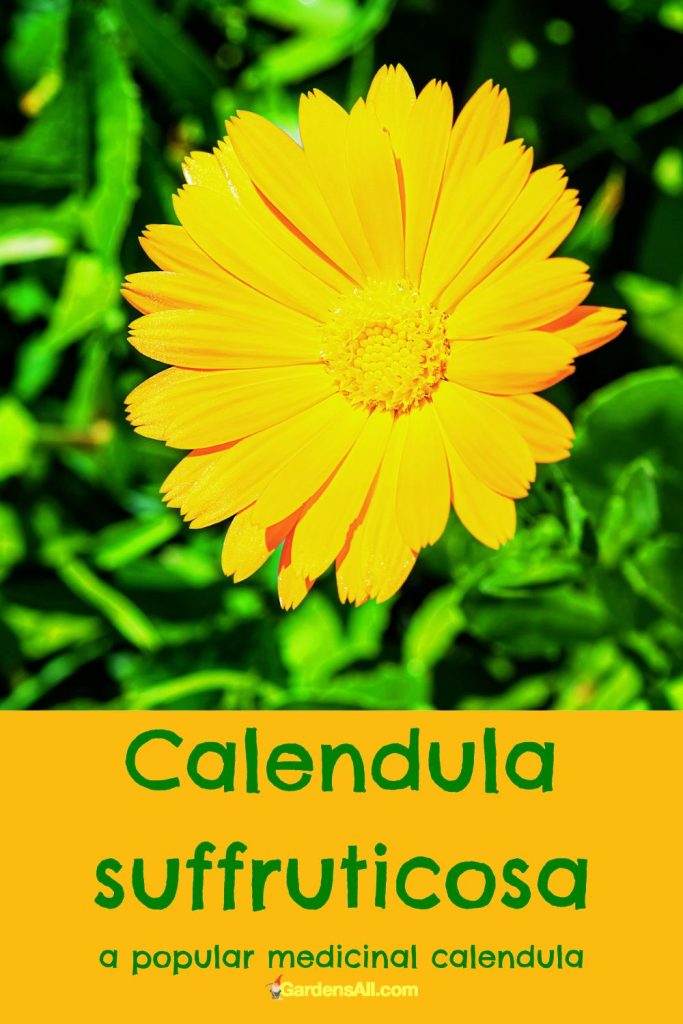We alway plant medicinal calendula plants in spring, so we wanted to know — and share — the best medicinal calendula varieties.
Calendula is a member of the Asteraceae family of plants which includes dandelion, daisies, mums and mugwort amongst many others.
The Genus Calendula officinalis, also known as pot marigold, is generally the most frequently used species of calendula in medicinal preparations due to its high concentration of beneficial compounds.
However, other species, including Calendula arvensis (field marigold) and Calendula suffruticosa (shrubby marigold), can also have medicinal properties. This is due to its high content of beneficial compounds such as flavonoids, carotenoids, polysaccharides, and triterpenoid esters.
While all cultivars of Calendula officinalis are considered medicinal, there may be some variations in the concentration of active compounds among different cultivars.
Here’s a short list of the top 5 best medicinal Calendula with proven medicinal properties:
5 Best Medicinal Calendula Cultivars
Calendula officinalis (‘Resina’)
Also known as pot marigold, this cultivar is often preferred for medicinal use because of its high resin content, where many of the plant’s medicinal compounds are concentrated.
- Common Names: Pot Marigold, Resina
- Growing Zones: Generally thrives in Zones 3-9
- Growth habit: Annual, but may behave as a short-lived perennial in mild climates

Calendula officinalis (‘Erfurter Orangefarbige’)
This cultivar, part of the pot marigold species, is frequently used in medicinal preparations and is known for its vibrant orange flowers.
- Common Names: Pot Marigold, Erfurter Orangefarbige
- Growing Zones: Generally thrives in Zones 3-9
- Growth habit: Annual, but may behave as a short-lived perennial in mild climates

Calendula officinalis (‘Pacific Beauty’)
This mix includes a range of colors and is also used for medicinal purposes.
- Common Names: Pot Marigold, Pacific Beauty
- Growing Zones: Generally thrives in Zones 3-9
- Growth habit: Annual, but may behave as a short-lived perennial in mild climates

Calendula arvensis
Commonly known as field marigold, this species is native to southern Europe but has also naturalized in North America. While not as commonly used medicinally as Calendula officinalis, it is also thought to contain beneficial compounds and can be used in similar ways.
- Common Names: Field Marigold
- Growing Zones: Thrives in Zones 6-9, but can naturalize in a broader range of conditions
- Growth habit: Annual, but may self-seed and naturalize in favorable conditions

Calendula suffruticosa
Known as shrubby marigold or Mediterranean marigold, this species is native to the Mediterranean region. It’s less common in North America and less commonly used for medicinal purposes compared to Calendula officinalis, but it can also have beneficial properties.
- Common Names: Shrubby Marigold, Mediterranean Marigold
- Growing Zones: Thrives in Zones 8-10, preferring Mediterranean-like conditions
- Growth habit: Perennial

Please note that the specific growing zones might slightly vary depending on the source of the seeds or plants, the specific conditions where they’re planted, and the care they receive. Always check with a local extension service or a reputable nursery for the most accurate and specific information.
You can read more about some of the many Calendula benefits here.
In general, calendula flowers are harvested for medicinal use, although the leaves can also be used. The flowers are typically dried and can be used to make teas, tinctures, ointments, or infused oils. Calendula is known for its anti-inflammatory, antiviral, and antibacterial properties, and is often used to soothe skin irritations, wounds, and burns.
However, it’s important to note that while calendula is generally considered safe, some people may be allergic to it, especially those who are allergic to other plants in the Asteraceae family such as ragweed, chrysanthemums, and daisies. Always consult a healthcare professional before starting any new herbal treatment.
Which Calendula Plants Have the Highest Measure of Compounds?
That’s what we wanted to know but the answer is hard to come by as it’s not widely documented in scientific studies. So we’re satisfied in knowing that product companies and folklore tend to favor the varieties in our list as being amongst the best medicinal Calendula.
The ‘Resina’ cultivar of Calendula officinalis is often noted for its high resin content, which is thought to correspond to a higher concentration of medicinal compounds. However, specific quantitative comparisons between ‘Resina’ and other cultivars, or between Calendula officinalis and other species like Calendula arvensis or Calendula suffruticosa, are not typically provided.
Beyond that, with Calendula, as with any plant or food, the amount of active compounds such as flavonoids, carotenoids, polysaccharides, and triterpenoid esters can vary widely. Variables include the specific plant variety, growing conditions, time of harvest, and the method of extraction or preparation as well as the age and whether fresh or dried.
Take Care
Remember to be safe and consult an appropriate wellness practitioner before starting any new herbal treatment. Calendula is generally considered safe, unless you’re allergic to other plants in the Asteraceae family.
See also how to make calendula salve.
I’m LeAura Alderson, a garden, herb and plant enthusiast with a passion for discovering the many edible and medicinal benefits of the plants all around us, including the weeds! I’m a writer, editor and media publisher for our family of websites.
While I was certified in fitness and life coaching, I am NOT a health practitioner. However, I’m a lifelong health enthusiast, with a keen interest in healthy, organic foods and making home remedies and the content we share is from our own experience and usage as well as that extracted from scientific research so that you can explore further on your own.
Always seek the advice and guidance of your health practitioners first and foremost.
As a family we’re steadily expanding our gardening, experimentation and knowledge around all things gardening, edible landscaping, fresh organic foods and self sustainability with farming in our future. I also own and manage iCreateDaily.com, a site all about transformation through creation, and the power of positivity, optimism and mindset.
References

